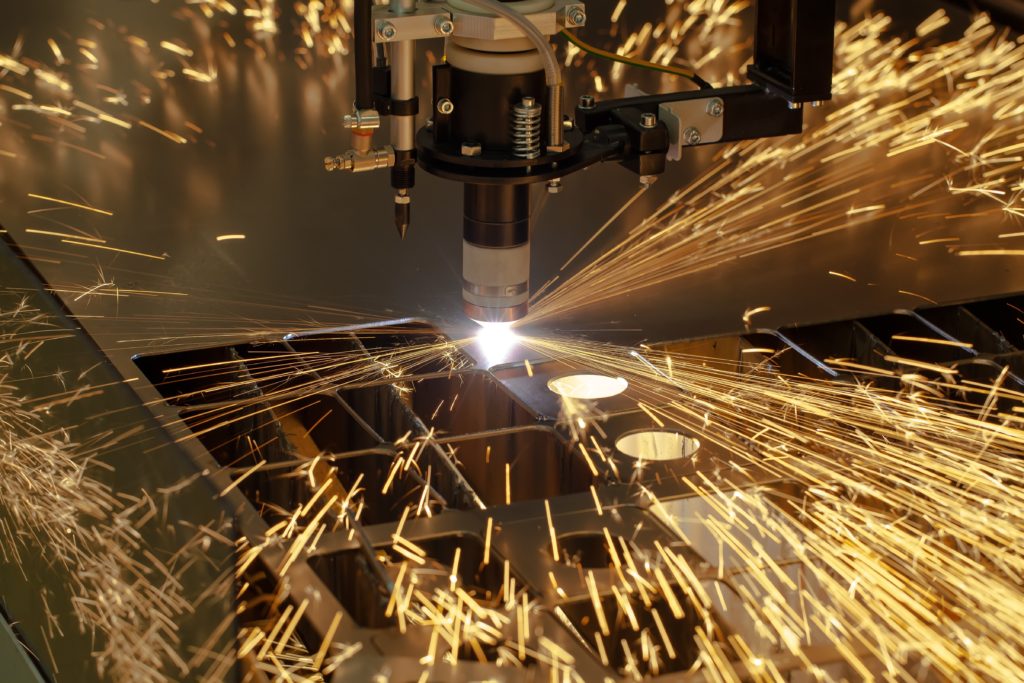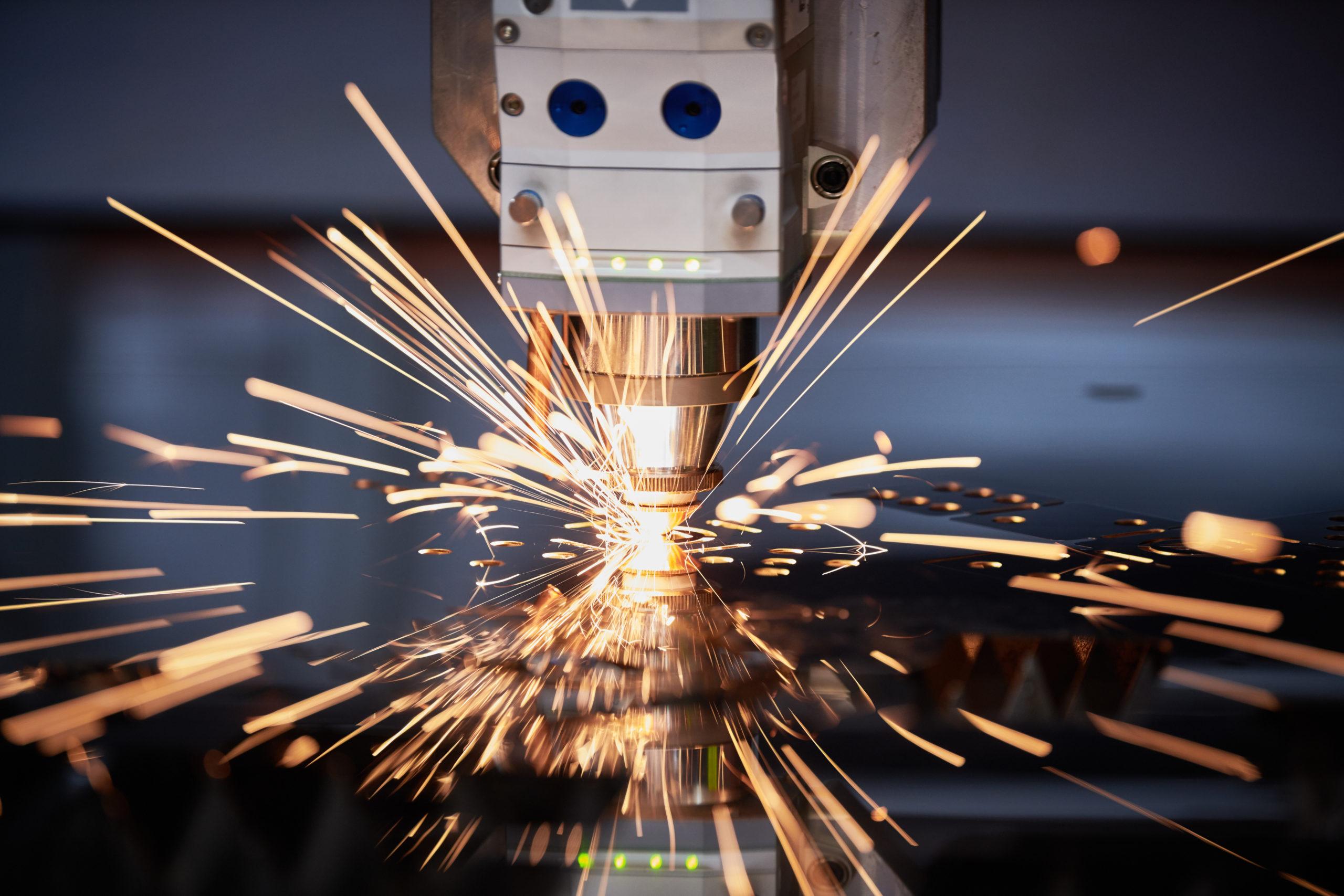

Plasma cutting systems are widely used in fabrication and repair. In recent years, they have naturally become a go-to tool for cutting many different types of material. While plasma cutting systems are capable of cutting any electrically-conductive material, there are certain considerations that must be taken into account when attempting to cut stainless steel. Let’s start by looking at the practicality of plasma cutting stainless steel.
Can a Plasma Cutter Cut Stainless Steel?
A plasma cutting is a great solution for cutting stainless steel. It is a relatively fast process and tends to be a more affordable method. There are a variety of plasma systems to select from to produce optimal results depending on your needs.
Now that you’ve selected a plasma cutter for your stainless steel cutting, let’s decide which gas to use when making your cut.
What Gas Should You Use When Cutting Stainless Steel?
The type of gas used for plasma cutting is one of the primary factors in determining the cut quality and edge finish of the stainless steel plate. Ideally, a high-definition dual-gas plasma cutting system will deliver the best results, however, a single gas system also works.
Single Gas Cutting
- Air: Depending on the amperage rating of the cutting system, you can use compressed air to cut stainless steel up to about 25mm (2”). A large amount of nitrogen present in air, however, will result in a blackening of the cut edge. Oxygen may also increase the heat-affected zone (HAZ) and degrade edge quality as well.
- Oxygen (O2): Oxygen may be used to cut stainless steel, but is a less than ideal option as it will cause degradation in edge quality and a larger heat-affected zone (HAZ).
- Nitrogen (N2): Nitrogen delivers increased cut speed and produces a smoother cut surface but may increase top edge rounding and angularity.
Dual Gas Cutting (recommended)
- Nitrogen (N2) – Water: Sometimes referred to as Water Mist Secondary (WMS), dual gas cutting with nitrogen and water is economical, produces a clean top edge, and gives a straw-colored cut edge finish. It does, however, necessitate the use of a water table.
- Hydrogen/Nitrogen (F5) – Nitrogen (N2): This combination produces superior angularity but can only cut material up to about 3/8” in thickness.
- Hydrogen/Argon (H35) – Nitrogen (N2): This gas pairing will provide a square cut edge with a varying color on thicker material but H35 is not readily available in all markets and excessive dross may result on thin plate.
Other Factors to Consider When Cutting Stainless Steel

Now that you know the different types of gas, let’s discuss how to achieve the best quality cut. There are a variety of ways to maximize your cut quality, efficiency, and safety while plasma cutting stainless steel.
Heat Affected Zone (HAZ)
Heat-affected zone is a concern when cutting a variety of materials, but is of special concern when cutting stainless steel. Most grades of stainless will show drastic signs of temperature change that remain even after the cooling of the material. This may require secondary process pickling or passivation to remove the discoloration left from the heating of the material.
Maximizing Edge Quality
The edge quality of a plasma cut on stainless steel plate will vary and is highly dependent on three factors:
- Table Condition: The condition of the bed, gantry, rails, bearings, and other components of your plasma table can have a substantial impact on edge quality. Performing regular maintenance on your table will ensure that you receive the best quality cut possible.
- Cutting / Shield Gases: Different gases or combinations of gases will produce differing cut edges on different thicknesses of stainless steel plate.
- Material Thickness: As the thickness of the plate increases, any undesirable cut edge effects will be amplified and a change in shielding gas may be necessary.
Bolt Hole Cutting
When mild steel hole cutting on high-end plasma systems, it is often possible to drop in bolts equal or larger in diameter to the thickness of the plate. Precision hole cutting is more difficult on stainless steel plates due to the arc characteristics and dross accumulation. Operators may find it easier to drill bolt holes on a stainless plate, perform secondary processes to square, or clean up holes cut with the plasma torch.
Can You Plasma Cut a Polyethylene Coated Sheet of Stainless Steel?
In food service and medical equipment fabrication, they often use polyethylene-coated sheeting to protect the surface finish of the material. Cutting PE coated stainless steel sheet is possible with plasma. However, you must keep amperage low and use nitrogen as a shield gas.
When you use nitrogen as a shield gas, it prevents the polyethylene from melting or burning. This is an effective way to cut a coated sheet of stainless steel, but the plasma will not be able to cut through if it is coated on both sides. If both sides are coated, then it will prevent the complete plasma circuit.
How to Minimize Dross When Cutting Stainless Steel
Operators who cut mild steel will be familiar with removing at least some dross. However, it is an unpleasant surprise to find that dross is considerably more difficult to remove when cutting a stainless steel plate. Reconfiguring the table slats may help alleviate this issue if it allows the pierce points to fall in between the slats.
If you are welding stainless steel, there are a few additional things to consider.
How to Prevent Contamination of Stainless Steel Plates
You must try not to contaminate the stainless steel plates. Accidental contamination can occur with carbon steel during dross removal, grinding, brushing, or other processes. This can cause rust pockets, staining, and other undesirable effects.
Produce High-Quality Parts by Plasma Cutting Stainless Steel
When considering special requirements of plasma cutting stainless steel, the process can work very well and produce very high-quality parts. If you have questions about plasma cutting stainless steel, contact your local welding supplier or table manufacturer. If you’re interested in plasma cutting, you can read more about our plasma cutting products, to help you improve your cuts & increase efficiency.
Sign up for our Monthly Newsletter
Join our community of over 20,000 industry experts and subscribe to our newsletters to receive product announcements and offers.